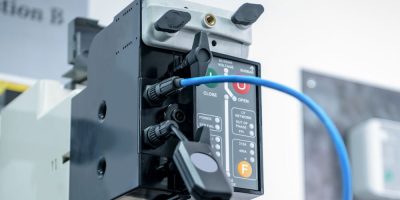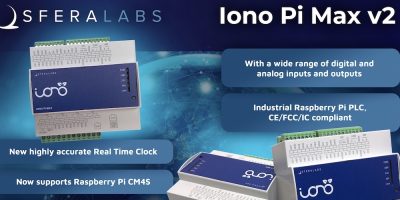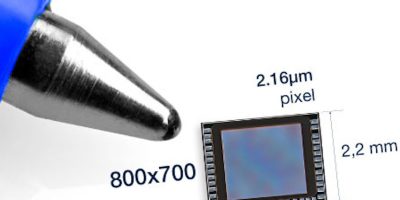Renesas has introduced the RA8D1 microcontroller (MCU) group. The RA8D1 group is the second in Renesas’ RA8 Series, the first MCUs based on the Arm Cortex-M85 processor. RA8D1 MCUs deliver breakthrough performance of over 6.39 CoreMark/MHz EEMBC’s CoreMark benchmark measures performance of MCUs and CPUs used in embedded systems. combined with ample memory, graphics and peripheral functions optimised to address diverse graphics display solutions, and Voice/Vision Multimodal AI requirements for a range of applications in building automation, home appliances, smart home, consumer, and medical market segments.
All RA8 Series MCUs take advantage of the high performance of the Arm Cortex-M85 processor and Arm’s Helium technology with a vector/SIMD instruction set extension that provides up to a 4X performance boost for digital signal processor (DSP) and machine learning (ML) implementations over the Cortex-M7 core. This added performance is ideal for graphics and neural network processing and can eliminate the need for a separate hardware accelerator in some applications. They also offer advanced security including Arm TrustZone technology, Renesas Security IP (RSIP-E51A), Secure Boot with first stage bootloader in immutable storage, Octal SPI interface with Decryption-on-the-fly (DOTF), and Pointer Authentication and Branch Target Identification (PACBTI) security extension.
The new RA8D1 devices include a high-resolution graphics LCD controller with parallel RGB and MIPI-DSI interfaces to LCD display panels, a 2D graphics drawing engine, a 16-bit camera interface (CEU), multiple external memory interfaces for storage of frame buffer and graphics assets, and 176 and 224 pin packages. This feature set is combined with professional quality graphics user interface software solutions from SEGGER emWin and Microsoft GUIX fully integrated into the Renesas Flexible Software Package (FSP). Renesas also provides support for open-source Light and Versatile Graphics Library (LVGL) and a robust network of graphics and AI ecosystem partners. A full-featured graphics evaluation kit with LCD panel and camera module rounds out the solution and provides a robust development platform for graphics applications including. industrial HMI, video doorbells, patient monitors, graphics calculators, security panels, printer display panels, and appliance displays.
“There is growing demand for high-quality displays to improve user experiences. The introduction of the RA8D1 MCUs showcases the design capabilities and market knowledge that have made Renesas the world leader in MCUs,” said Daryl Khoo, Vice President of the IoT Platform Division at Renesas. “These new devices take advantage of the unprecedented performance of the Cortex-M85 core and Helium technology to meet our customers increasing requirements for better display solutions and fast-growing vision AI implementations such as people and object detection, face recognition, image classification, and pose estimation.”
“Plumerai licenses highly accurate AI solutions to customers developing smart home cameras and IoT devices,” said Roeland Nusselder, CEO of Plumerai. “We have ported our Plumerai People Detection AI software to the new RA8D1 MCU that includes the powerful Arm Cortex-M85 CPU with Helium vector extensions. The RA8D1 speeds up our software by 6.5x compared to an Arm Cortex-M7 using Arm’s CMSIS-NN kernels. There’s a big demand for our AI solutions in home security, smart buildings, home appliances and retail. Using the RA8 MCUs from Renesas, we can now fulfil this demand.”
The new RA8D1 Group MCUs are supported by Renesas’ Flexible Software Package (FSP). The FSP enables faster application development by providing all the infrastructure software needed, including multiple RTOS, BSP, peripheral drivers, middleware, connectivity, networking, and security stacks as well as reference software to build complex AI, motor control and cloud solutions. It allows customers to integrate their own legacy code and choice of RTOS with FSP, thus providing full flexibility in application development. Using the FSP will ease migration of existing designs to the new RA8 Series devices.
The RA8D1 Group MCUs are available now, along with the FSP software. Renesas is also shipping the RA8D1 Evaluation Kit that includes example projects targeted at graphics applications. Various Renesas Ready ecosystem partners also provide production-ready solutions for the RA8D1 MCUs. Renesas welcomes other partners who would like to port their software solutions to take advantage of the Cortex-M85 core and Helium. Information on all these offerings is available at renesas.com/RA8D1. Samples and kits can be ordered either on the Renesas website or through distributors.







